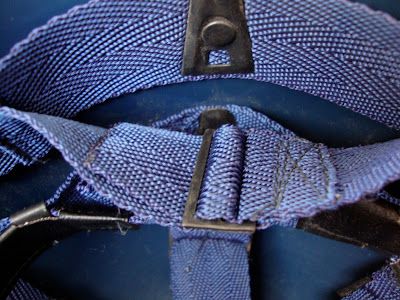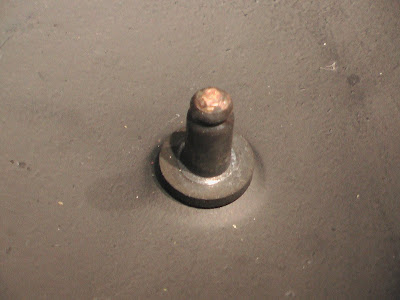Somebody call a cop!
I certainly can't speak for every ex-GI regarding the nature of MPs...
we surely saw plenty of pictures of them on the homefront doing the bidding of presidents Johnson, Nixon, and my parents...
they also frequently distinguished themselves in combat in Vietnam,
and they did a fine job of defending their country considering that they were a bunch of total a-holes
Of course, I kid.
I had only limited experience with military police in the guise of US Navy Shore Patrol and the experience was always very pleasant and positive.
Again, I kid.
Now comes a very handsome Westinghouse liner of the Korean/Vietnam era fully tricked out in the livery of a Military Policeman. "Let's see some I.D. soldier!"
Numerals and stripes appear to be waterslide transfers, as is the MP insignia on the front
At least three layers of paint can be identified on this lid, including something looking very like the haze-gray of the Navy.
The distinctive insignia of a 3rd Army badass is also a water transfer decal.
The headband is marked and intact though the nape strap is missing.
Headband leather shows little staining. This model was the last to retain the stud and garter fastener for the chinstrap.
Perhaps the name of a previous owner.
No surprises here for the fan of the M1
Or here either.
Keeping aberrant behavior at bay at the cost of constant vigilance.
Captured in the popular culture as our first line of defense against flower-wielding hippies (or, apparently, young Kennedys as this Lego guy suggests)
This was seldom a welcome greeting at the front gate.
Over the next month I hope to highlight the various military police and military traffic control helmets in my collection. Again comments, corrections, and questions are always welcome, and are often used to update my posts.
See you next time with another fine Military Police lid.
Mannie









































































